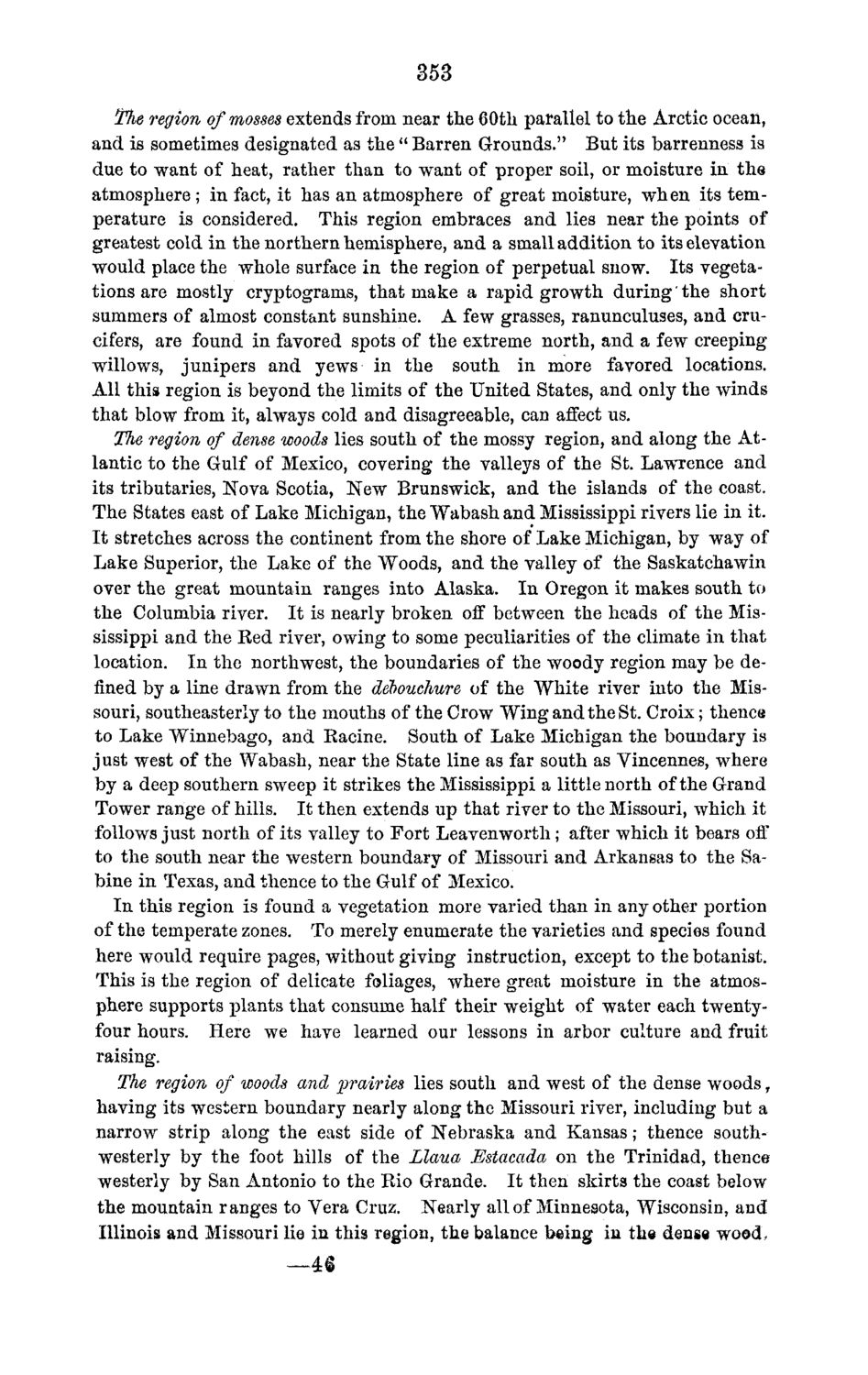| |
| |
Caption: Board of Trustees Minutes - 1870
This is a reduced-resolution page image for fast online browsing.

EXTRACTED TEXT FROM PAGE:
353 The region of mosses extends from near the 60th parallel to the Arctic ocean, and is sometimes designated as the " Barren Grounds." But its barrenness is due to want of heat, rather than to want of proper soil, or moisture in the atmosphere ; in fact, it has an atmosphere of great moisture, when its temperature is considered. This region embraces and lies near the points of greatest cold in the northern hemisphere, and a small addition to its elevation would place the whole surface in the region of perpetual snow. Its vegetations are mostly cryptograms, that make a rapid growth during the short summers of almost constant sunshine. A few grasses, ranunculuses, and crucifers, are found in favored spots of the extreme north, and a few creeping willows, junipers and yews in the south in more favored locations. All this region is beyond the limits of the United States, and only the winds that blow from it, always cold and disagreeable, can affect us. The region of dense woods lies south of the mossy region, and along the Atlantic to the Gulf of Mexico, covering the valleys of the St. Lawrence and its tributaries, Nova Scotia, New Brunswick, and the islands of the coast. The States east of Lake Michigan, the Wabash and Mississippi rivers lie in it. It stretches across the continent from the shore of Lake Michigan, by way of Lake Superior, the Lake of the Woods, and the valley of the Saskatchawin over the great mountain ranges into Alaska. In Oregon it makes south to the Columbia river. It is nearly broken off between the heads of the Mississippi and the Ked river, owing to some peculiarities of the climate in that location. In the northwest, the boundaries of the woody region may be defined by a line drawn from the debouchure of the White river into the Missouri, southeasterly to the mouths of the Crow Wing and the St. Croix; thence to Lake Winnebago, and Racine. South of Lake Michigan the boundary is just west of the Wabash, near the State line as far south as Vincennes, where by a deep southern sweep it strikes the Mississippi a little north of the Grand Tower range of hills. It then extends up that river to the Missouri, which it follows just north of its valley to Fort Leavenworth; after which it bears off to the south near the western boundary of Missouri and Arkansas to the Sabine in Texas, and thence to the Gulf of Mexico. In this region is found a vegetation more varied than in any other portion of the temperate zones. To merely enumerate the varieties and species found here would require pages, without giving instruction, except to the botanist. This is the region of delicate foliages, where great moisture in the atmosphere supports plants that consume half their weight of water each twentyfour hours. Here we have learned our lessons in arbor culture and fruit raising. The region of woods and prairies lies south and west of the dense woods, having its western boundary nearly along the Missouri river, including but a narrow strip along the east side of Nebraska and Kansas; thence southwesterly by the foot hills of the Llaua Estacada on the Trinidad, thence westerly by San Antonio to the Rio Grande. It then skirts the coast below the mountain ranges to Vera Cruz. Nearly all of Minnesota, Wisconsin, and Illinois and Missouri lie in this region, the balance being in the dense wood, —4«
| |